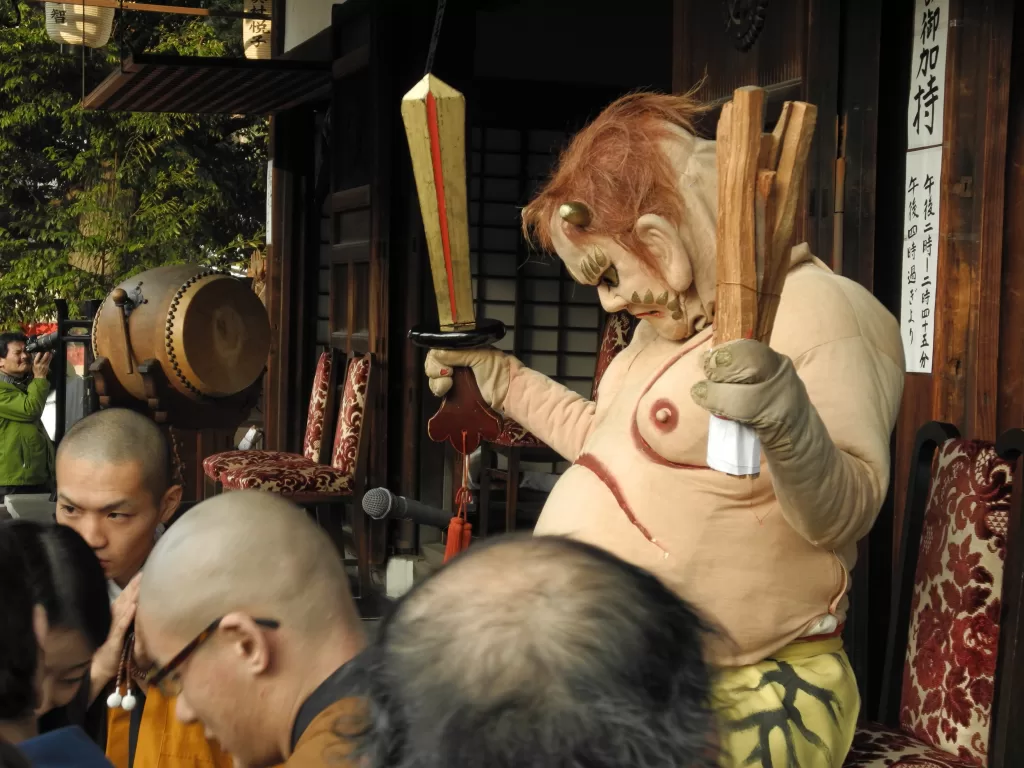Dynamic Oni Dance Takes Center Stage at Setsubun-e Festival at Rozanji Temple

Highlighting the Oni Dance
As part of the Setsubun celebrations on February 3, one of the highlights each year at Rozanji Temple is the dynamic and traditional Oni dance. Expected to commence at 3 pm, this spirited performance features three Oni (demon) characters symbolizing human “greed, anger, and complaint.” Donned in vividly colored masks; red, blue and black, armed with a sword, an ax, and a hammer respectively, they grace the stage. It’s one of the most anticipated Kyoto events in February.
The ritual consists of these three Onis appearing in front of the main hall and gradually working their way into it whilst dancing. They attempt to disrupt a ritual to repel evil spirits and grant longevity.
This auspicious ceremony originated from an old tale. As per tradition, it was believed that the founder of the temple once repelled three Onis who were determined to hinder his ascetic practice.

The Ritual: ‘Oni no Okaji’
Amid the vibrant chaos of dancing Onis and flying beans lies another significant ceremony. This rite is known as ‘Oni no okaji.’ Characterized by demons who had their evil spirit driven out, this ritual takes place before and after the dance. It involves praying for healing and overall well-being.
When the Onis are successfully dispelled using beans, they return cleansed of any malevolent spirits for ‘Oni-no-Okaji.’ They then proceed to touch at areas of your body that ail you while praying for your recovery.
Unique Bean Throwing Tradition & Experiences
Rozanji temple’s setsubun festivities are marked by its distinctive bean-throwing tradition where participants drive away evil by throwing uniquely prepared beans at them. Known as mamemaki, this practice involves throwing beans covered with red or white colored sugar, believed to promote long life.
Every year approximately 1000 people visit Rozanji Temple to take part in these activities, creating an atmosphere that is both exhilarating and crowded. Visitors are advised to be wary of sparks during Kosatsu-yaki where old amulets are burned with feelings of gratitude. Akin to letting go of the past year’s negativity while expressing thankfulness for its protection.
Experience a part of Japanese history up close with these age-old traditions filled with enthusiasm, laughter, and dancing demons, right from tossing sugar-coated beans towards characterized vices to intimate blessings by cleansed demons.
You might also want to experience the vibrant and energetic Yoshida Shrine Setsubun Festival held in Kyoto. The festival at Yoshida Shrine offers a remarkable experience for both locals and visitors alike. The Setsubun Festival at Yoshida Shrine showcases two significant rituals: Tsuinashiki and Karosai, held on February 2nd and 3rd.